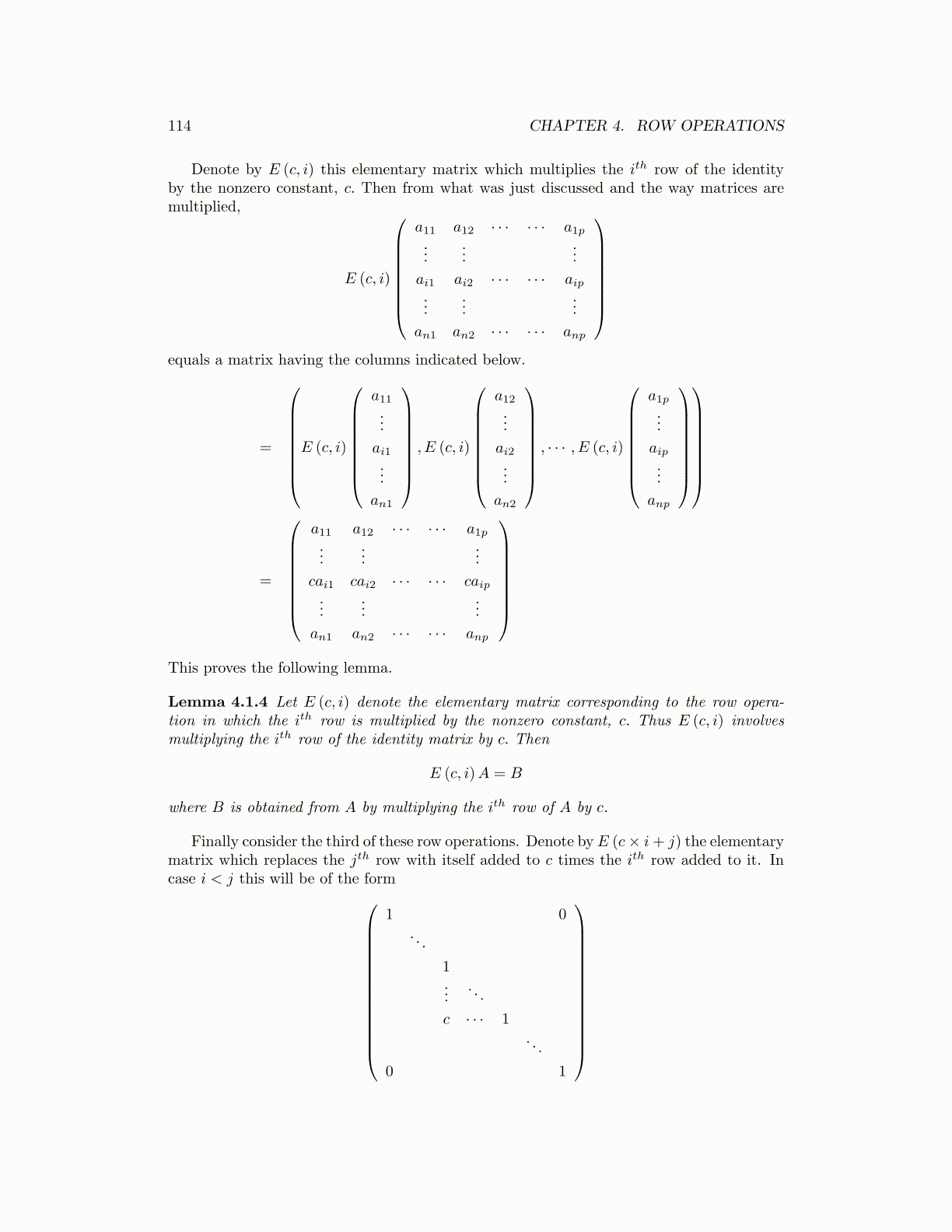
114 CHAPTER 4. ROW OPERATIONS
Denote by E (c, i) this elementary matrix which multiplies the ith row of the identityby the nonzero constant, c. Then from what was just discussed and the way matrices aremultiplied,
E (c, i)
a11 a12 · · · · · · a1p...
......
ai1 ai2 · · · · · · aip...
......
an1 an2 · · · · · · anp
equals a matrix having the columns indicated below.
=
E (c, i)
a11...
ai1...
an1
, E (c, i)
a12...
ai2...
an2
, · · · , E (c, i)
a1p...
aip...
anp
=
a11 a12 · · · · · · a1p...
......
cai1 cai2 · · · · · · caip...
......
an1 an2 · · · · · · anp
This proves the following lemma.
Lemma 4.1.4 Let E (c, i) denote the elementary matrix corresponding to the row opera-tion in which the ith row is multiplied by the nonzero constant, c. Thus E (c, i) involvesmultiplying the ith row of the identity matrix by c. Then
E (c, i)A = B
where B is obtained from A by multiplying the ith row of A by c.
Finally consider the third of these row operations. Denote by E (c× i+ j) the elementarymatrix which replaces the jth row with itself added to c times the ith row added to it. Incase i < j this will be of the form
1 0. . .
1...
. . .
c · · · 1. . .
0 1